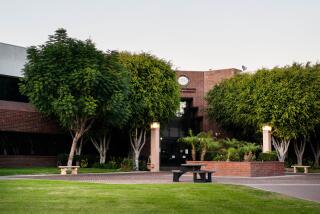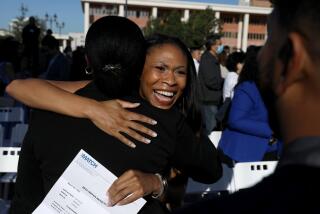Rekindling the Dream Can Cure King/Drew
- Share via
Long before the loss of accreditation at Martin Luther King Jr./Drew Medical Center this month, the standards and practices of other healthcare providers in South Los Angeles were shoddy. When my 82-year-old father died of cancer in 1994, the Medicare/Medi-Cal doctor who had been his primary physician asked me belatedly if his prostate gland had been removed. The doctor had earlier failed to inquire or note this important element of my father’s medical history. There are many such examples in our community.
What surprises me about the ongoing debate over King/Drew is the assertion by community spokespeople and potential patients that the primary blame lies not within but outside the hospital walls. There have even been cries of local political sabotage. But in 2003 a black community hospital in Washington, D.C., also lost its accreditation. The King/Drew fiasco appears to be simply a reiteration of the sad fact that first-class healthcare for the inner city is often just a figment of the imagination.
There was a time, circa 1955 or so, when L.A. County General Hospital, now L.A. County-USC Medical Center, perched like a beacon of reassurance for the entire city. Four of my siblings were born there. My aunt worked there as a nurse. I worked there while attending junior college.
Little did I know that a precipitous decline in care and treatment at a newer landmark facility, King/Drew, half a century later would send new generations of patients back to those original, now overcrowded hospital wards.
Many of us -- some with greater clarity than others -- have watched this situation evolve. In the aftermath of the 1965 L.A. riots, citywide attention was focused on the need for infrastructure improvements in the minority community. Within a few years, King/Drew opened its shiny new doors to grateful residents of Watts/Willowbrook and surrounding communities. We would gaze upon the facility with pride. It was a time when anything associated with the name Martin Luther King Jr. -- a boulevard, a school, a park -- would join the Watts Towers on a list of must-see neighborhood sites to show visitors.
Sadly, during Black History Month 2005, King/Drew stands as a dysfunctional legacy to the dreams of the Rev. King.
Mere monetary allocations by local, state and federal governments cannot rescue it. Neither will the takeover of day-to-day operations by an outside management firm. King/Drew is the offspring of a dedicated struggle, and somehow that dedication -- along with the integrity and pride of the hospital’s original staff and administrators -- will have to be reborn.






